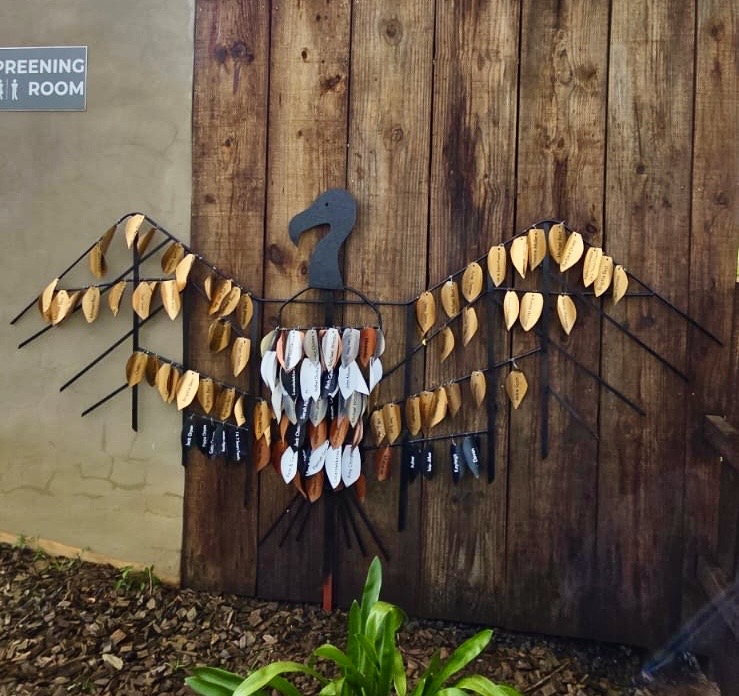As we know, working with African Wild Dogs is an intense and extensive undertaking that can prove difficult at times. Yet, there is not much more rewarding than observing this iconic endangered species thrive in their natural environment.
We at Wildlife ACT are constantly evolving our African Wild Dog conservation strategies to ensure that we keep up with the ever-changing nature of the threats they face. These are just a few of the key strategies we make use of:
1. Innovative Technology Solutions: Wildlife ACT utilises cutting-edge technology to enhance the conservation of African Wild Dogs, a species under serious threat due to habitat loss, human-wildlife conflict, among others. One of our key strategies involves the use of VHF and GPS tracking collars on as many pack members as possible. These collars assist in monitoring and provide real-time data on the location and movements of individuals and packs, enabling us to monitor and report on their health, behaviour, and interactions with other wildlife, as well as to intervene quickly in cases of snaring events, injuries, dispersals events, break outs, or conflict with humans.
To further enhance monitoring, Wildlife ACT has collaborated on the installation of LoRa (Long Range) towers in various Protected Areas, which are used for tracking collared priority species. These towers cover vast areas, allowing for more consistent and reliable data collection, even in remote regions. This technology significantly improves the ability to track and protect Wild Dogs in real-time.
Lastly, extensive camera trap surveys are managed both in and outside of Protected Areas, which provide invaluable insights into the behavior and dynamics of Wild Dogs and assist in cases where they have exited Protected Areas during dispersals.

2. Strategic Partnerships: African Wild Dogs have some of the largest home ranges of Africa’s mammals, historically of between 500 and 1500 square kilometers. They are also Africa’s most successful predators, with a success rate of up to 85% and they are known to hunt almost every day.
Despite being endangered, these high prey and space requirements can make it challenging to find suitable homes for packs, that will allow the Wild Dogs to survive and reproduce naturally, whilst preventing both the decline of resident herbivore populations and breakouts from reserves.
Wildlife ACT is a long standing contributing member of both the Wild Dog Advisory Group of South Africa (WAG-SA) and the KwaZulu-Natal Wild Dog Management Group (KZN-WDMG) which works with a variety of entities, stakeholders, conservationists, reserve management and organizations in order to identify the threats and potential mitigation measures Wild Dogs face.
Discussing suitable locations for surplus Wild Dog packs, considering their habitat requirements as well as genetic factors, and conflict with other species, such as lions. This work aims to both maintain existing Wild Dog populations, and introduce them to new safe protected areas, thus expanding their range and contributing to the long-term conservation of the species.

3. Human-wildlife coexistence: African Wild Dog populations in KwaZulu-Natal are at risk, facing many threats from disease, conflict with other predators to significantly reduced habitat sizes. Human-wildlife conflict is another of these threats and it is thus crucial for their conservation and for the communities to move towards mitigating these threats through positive practical actions.
Through effective monitoring, Wildlife ACT aims to identify potential dispersal groups before they leave their natal packs. These dispersal groups are often considered a breakout risk, as they move around and through protected areas searching for potential mates, if none are found within the protected area they will likely start to search outside of the Protected Areas (PA). This can lead to conflict with the communities surrounding these areas, as they may prey on the livestock that they encounter.
Whilst they are outside the PA they are also at risk from contracting diseases from roaming domestic dogs. It is therefore vital to prevent them from exiting Protected Areas, and if they do leave the safety of the PA it is imperative that swift action is taken to bring them back in. This rapid reaction is the benefit of having intensive monitoring .
Another strategy implemented by Wildlife ACT is engaging with local communities that are often impacted the most by human-wildlife conflict. Awareness campaigns help to educate local communities on the importance of African Wild Dogs in their ecosystems and can assist in fostering positive changes in attitudes. Providing training on mitigation techniques against livestock loss also helps communities be better equipped to reduce potential human-wildlife conflict, which ultimately promotes human-wildlife coexistence.

As we mark African Wild Dog Day, it's essential to recognise the progress made in conserving these remarkable animals, yet also acknowledge the ongoing challenges they face. By raising awareness and supporting conservation initiatives, we can help secure a future where African Wild Dogs thrive in the wild, maintaining their critical role in Africa's ecosystems. Together, we can ensure that these incredible creatures continue to roam the landscapes they call home.
To support the work that we do in the realm of Wild Dog conservation, please contact kayleigh@wildlifeact.com
Write up by:
Wildlife ACT Field Technician, Lucy Chimes, Wildlife ACT Conservation Coordinator, Chris du Toit, and Wildlife ACT Senior Field Technician, Gareth Robinson





.jpg)




